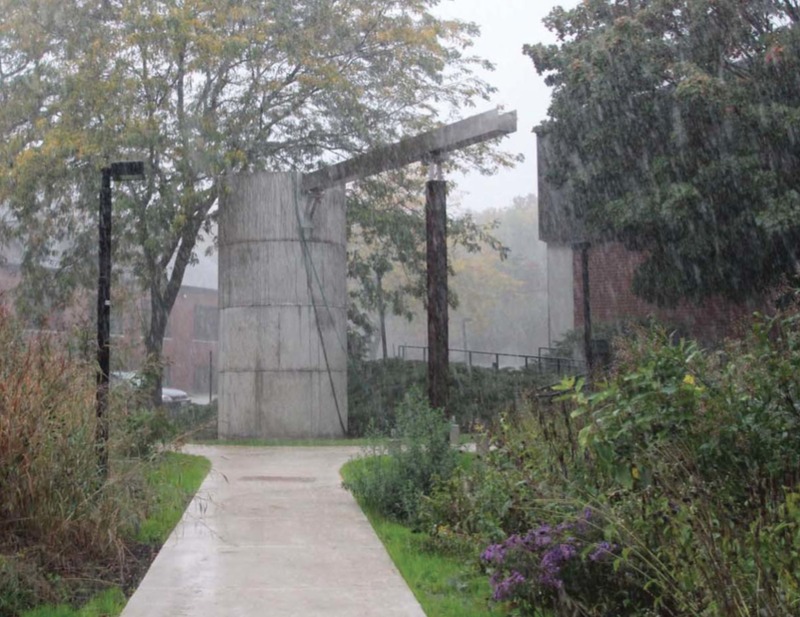UWM Sustainability Initiatives
UWM is proud to be named a Green Ribbon School by the U.S. Department of Education. This honor is attributed to schools that demonstrate measurable success in reducing waste, energy use and emissions. UWM is the only UW System institution that is currently recognized with this distinction, but hopefully it serves as a pioneer in the “greening” of campuses across the country.
The initiatives that helped UWM receive such prestigious recognition include rooftop gardens, solar panels, a wind turbine, community gardens, E-waste recycling, bicycle friendliness and stormwater management, to mention but a few.[i] The students also benefit from collaborations between UWM Restaurant Operations, the Food and Garden Club, the Institute for Urban Agriculture and Nutrition, and the Conservation and Environmental Science’s permaculture course. These entities come together to provide healthy, organic, local foods to students year round.[ii] The school notes in its application for the award: “since 2008, UWM has reduced its energy use per square foot by 27% (avoiding $11.9 million in energy costs between 2010 and 2015)” and “Overall, UWM has reduced its greenhouse gas emissions [by] over 20% at the main Kenwood Campus.”[iii]
In addition to interdisciplinary emphasis on environmentalism and sustainability in the arts and humanities, UWM offers nearly two hundred programs that devote specific attention to environmental wellness. Such programs are offered through the School of Architecture’s Institute for Ecological Design, the Institute for Urban Agriculture and Nutrition, the Master of Sustainable Peacebuilding program, the undergraduate degree program in Conservation and Environmental Sciences, Graduate and Doctoral degrees offered at the School of Freshwater Sciences, the Water Technology Certificate, and through programs supported by the Center for Community-Based Learning, Leadership, and Research.[iv]
The compact urban campus includes over eleven acres of natural forest in Downer Woods, as well as intentional native prairies and engineered stormwater gardens. The combination of systems now prevents an annual 16.5 million gallons of stormwater from flowing into the Milwaukee street sewers.[v] The school also adopted a Natural Lawn Care program in 2014, doing away with all synthetically formulated fertilizers and pesticides.[vi] Further, the school switched over to environmentally conscious cleaning solutions, which, according to the school, contribute to better staff morale, better oversight of chemicals, reduced water consumption and a notable reduction in cleaning expenses.[vii]
Although the UWM Office of Sustainability has spearheaded many of the green initiatives on campus, Chief Sustainability Officer Kate Nelson highlights the strong institutional support for sustainability. The achievements that have been made at UWM in the past few years came to fruition because people from across the UWM community, including students, faculty, staff and student organizations, were eager to adopt healthier options for campus and the environment.[viii]
[i] Kate Nelson and Mark A. Mone, Wisconsin Post-Secondary Institution Application, U.S. Department of Education Green Ribbon Schools, December 2015. 9. http://www2.ed.gov/programs/green-ribbon-schools/2016-schools/wi-postsecondary-university-wisconsin-milwaukee.pdf; “In 2015, UW-Milwaukee students invested in a five year student membership plan for the City of Milwaukee’s Bublr Bikeshare program and in 2013 UWM was recognized as a Bike Friendly Campus by the League of American Bicyclists.” Nelson and Mone, “Green Ribbon School Application,” 9.
[ii] Nelson and Mone, “Green Ribbon Schools Application,” 10-11.
[iii] Ibid., 8, 9.
[iv] Ibid., 12-13.
[v] Ibid., 9, 13.
[vi] Ibid., 9.
[vii] Ibid., 10.
[viii] Ibid., 13.

